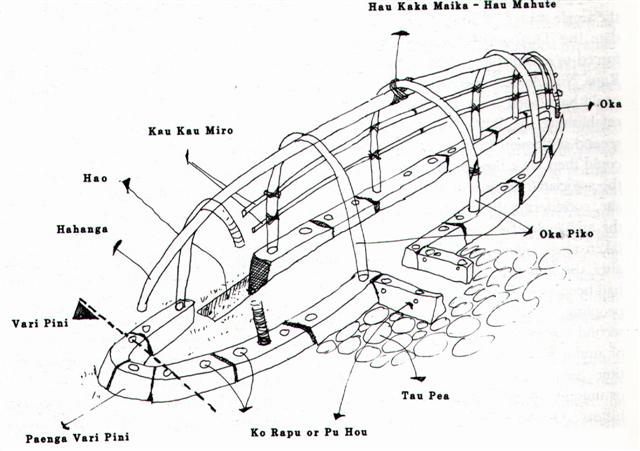7. The birth of a new Sun is probably located at Paenga Vari Pini and it could be a part of the curve which comes before Hanga Te Pau. And Tama is far to the east on the southern coast, a suitable location for the rising new Sun.
Maybe the last hole in the Vari Pini sector could represent Hanga Te Pau. This hole is not large, and the designer has given us a hint by drawing the Vari Pini line across its 'eye'. The following is my translation into English of a short notice (copied from an old book) in my daily newspaper: All the natives of the South Sea islands are great swimmers. Both men, women and children could almost be called amphibians, because they spend a good portion of their day swimming, diving, bathing and doing all those and similar sports in the midst of the breakers and the surging sea rolling in over the coral banks. The more the sea is heaving, the more the islander feels at home in this his right element. These islanders seem to be very fond of children, especially their neighbours', which they until quite recently did not hesitate to eat. That, in addition to the repulsive murder of their own children, especially as regards girls, results in a quite considerable reduction in their number. But otherwise the children are as merry and free from sorrow as their parents. They learn to swim almost as soon as they begin to walk. The children are very amused by swinging and by sending up paper kites. They also have a rather peculiar game, which consists of keeping their eyes wide open with the help of a stiff straw of grass pushing their eye-lids apart. The straw signifies winter in contrast to the leaf of summer. According to the rongorongo system of signs 'the eye-lid pushed up by a straw' is probably meant to illustrate a season of high sky, although it is seldom used in a single 'double-eye', more often as a vertical arrangement of 3 double-eyes:
The explorers arrived to the island at the beginning of June, i.e. with winter solstice not far ahead. At that time of the year the sky roof is low (in contrast to the high summer sky). The roof in a hare paega is high at the entrance but low at the 2 'corners'. There is a stone curve with a low roof also at right in the picture. The cycle of time inside a hare paega is a double cycle, consistent with the idea of Moon ruling inside in the night. Counting holes from the entrance we can reach 16 by either counting the exit hole as 1 or by counting the last hole in the Vari Pini sector as 2. The latter alternative is more convincing. The 17th hole will then be smaller than those preceding, a sign that something new is beginning. Waxing Moon (together with Waxing Sun) comes first, then Waning Moon (without Sun). But this is just a preliminary assessment, because the picture is loaded with signs which cannot be understood without much further work. For instance are there small holes at the sides of the entrance stones. |

